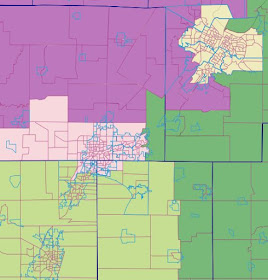Advance International Trade in GoodsThat number is a bit fluky, as much of that jump in imports is due to a $3.9 billion increase in “Industrial Supplies”, which are a lot of energy products and raw materials. But it continued a mediocre years for exports, which were only up 0.7% in December 2019 vs December 2018, and that’s before inflation. So while our goods deficit did drop by more than $11 million from the December 2018 number, the “improvement” in our trade balance for goods really is a recessionary sign where fewer imports are coming in, and isn’t happening because of Americans exporting more products.
The international trade deficit was $68.3 billion in December, up $5.3 billion from $63.0 billion in November. Exports of goods for December were $137.0 billion, $0.4 billion more than November exports. Imports of goods for December were $205.3 billion, $5.8 billion more than November imports.
Worse, American manufacturers didn’t make up the difference by selling more products domestically (which should be the goal of trade barriers). In fact, another Commerce Department report from this week says that December marked a notable decline in most sectors of manufacturing orders and sales.
New OrdersIn fact, take out an increase of more than $9 billion in defense capital goods, and new orders in all other sectors were down 1.5% for December. That follows the “non-defense capital” figures being down 0.9% in November, and 5.9% from December 2018.
New orders for manufactured durable goods in December increased $5.7 billion or 2.4 percent to $245.5 billion, the U.S. Census Bureau announced today. This increase, up two of the last three months, followed a 3.1 percent November decrease. Excluding transportation, new orders decreased 0.1 percent. Excluding defense, new orders decreased 2.5 percent. Transportation equipment, up following three consecutive monthly decreases, drove the increase, $5.9 billion or 7.6 percent to $82.9 billion.
Bad enough for future prospects, but there were also less products going out the door in December, continuing a decline that happened throughout the second half of 2019, and fewer prior orders left to finish.
ShipmentsSo what’s going to stop these negative figures in manufacturing? You got me, as US GDP growth is looking to be just under 2% for 4Q 2019 when it’s reported tomorrow, and growth isn’t predicted to get above that for us or most other advanced economies for 2020.
Shipments of manufactured durable goods in December, down six consecutive months, decreased $0.5 billion or 0.2 percent to $250.4 billion. This followed a 0.1 percent November decrease. Transportation equipment, also down six consecutive months, led the decrease, $0.4 billion or 0.4 percent to $83.2 billion.
Unfilled Orders
Unfilled orders for manufactured durable goods in December, down three of the last four months, decreased $0.8 billion or 0.1 percent to $1,156.0 billion. This followed a 0.6 percent November decrease. Machinery, down fourteen consecutive months, led the decrease, $0.5 billion or 0.5 percent to $101.6 billion.
That reality makes it remarkable to me that even though the growth in manufacturing jobs leveled off in 2019, there still was growth (although the industrial Midwest wasn’t as lucky).
But you read these reports and wonder why it wasn’t even worse. Lower sales, lower orders, and lower prices (if you read the PPI reports) aren’t exactly good for business, and I can’t figure out an economic reason there wouldn’t be cutbacks at this point.
And yet we’re supposed to believe that President Trump signing NAFTA 2.0…ERRR…USMCA is going to reverse this decline in manufacturing, and magically make everything OK? Don’t be a sucker, folks. 2019 ended weak in that sector and there isn’t a lot of capacity left to make us stronger for 2020.


























